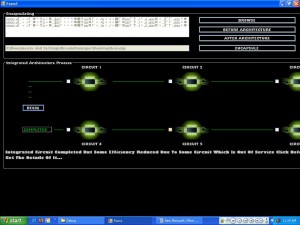Final year Java Project Source Code for Temporal Partitioning of Communication Resources in an Integrated Architecture.
The communication resources of a single time- triggered network can be shared among different DASs. In conjunction with nodes for the execution of application software from different DASs, this integration not only reduces the number of node computers but also results in fewer connectors and wires.
Virtual networks module:
An overlay network is a computer network that is built on top of another network. The DECOS architecture provides overlay networks, which are denoted as VNs, on top of a time-triggered physical network. Each VN handles the message exchanges and provides encapsulation for the jobs by preventing jobs from affecting the temporal properties of messages sent by other jobs.
Message Timing module :
In this module each circuit is given separate work if a circuit fails it waits for the given interval of time to check if the circuit gets repaired automatically if the circuit remains un repaired and the file goes to the rest of the circuits.
INPUT/OUTPUT :
Process for the architecture is encapsulated and inserted which is the input and the output will be the beginning of the process.
Future Enhancements:
For future work, additional experiments are suggested as part of the development path toward the exploitation of VNs in ultra dependable systems such as a drive-by-wire car. The experiments presented in this paper have focused on a single probe job within a selected VN. Interesting scenarios for future experimental evaluations include test cases with multiple probe jobs, which can exhibit simultaneous timing failures and are located in different VNs. Thereby, additional experiments can further increase the confidence in the presented hypotheses with respect to fault isolation and performance.

